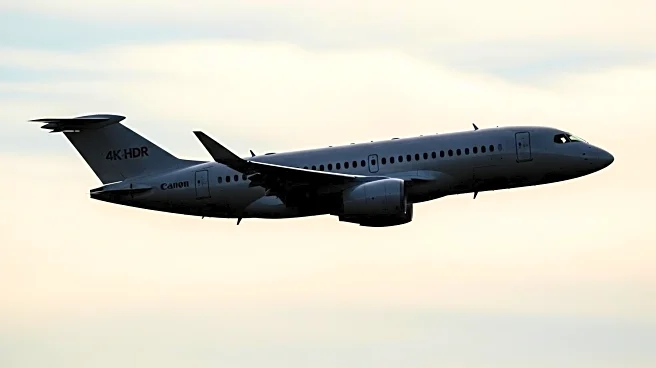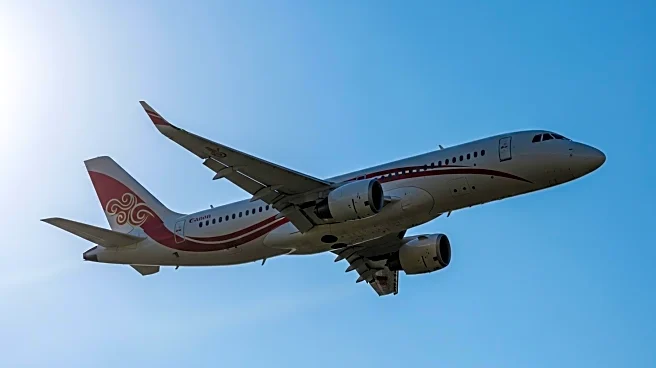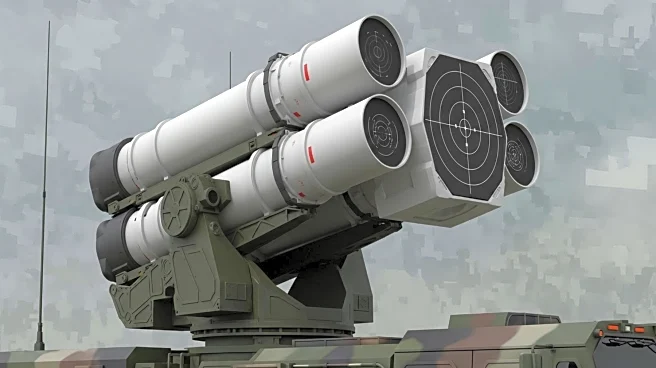What's Happening?
Air Cambodia has committed to expanding its fleet with the Comac C909 narrowbody aircraft, marking a significant development in the airline's operations. The airline has placed an order for 10 C909s and signed letters of intent for an additional 10 aircraft. This agreement was formalized in Zhengzhou on September 8, as reported by China Daily. The C909, previously known as the ARJ21, is primarily operated by Chinese airlines, with 165 units currently in service. Air Cambodia's acquisition will make it the third international operator of the C909, following Indonesia's TransNusa and Vietnam's Vietjet Air. The airline's current fleet includes three ATR 72s and two Airbus A320s. Additionally, Comac has delivered the first C909 configured for medical services to China Flying Dragon General Aviation, intended for emergency rescue and critical care transfer.
Why It's Important?
This commitment by Air Cambodia to the Comac C909 fleet signifies a strategic move to enhance its operational capabilities and expand its service offerings. The introduction of the C909 aircraft, particularly in a medical support configuration, highlights the growing versatility and international appeal of Chinese-built jets. For Comac, this deal represents a crucial step in establishing its presence in the international aviation market, potentially increasing its competitiveness against established aircraft manufacturers. The expansion of Air Cambodia's fleet could lead to improved connectivity and service efficiency, benefiting passengers and potentially boosting tourism and business travel in the region.
What's Next?
As Air Cambodia integrates the Comac C909 into its fleet, the airline may focus on optimizing its routes and services to leverage the new aircraft's capabilities. Stakeholders in the aviation industry will likely monitor the performance and reliability of the C909 in international operations, which could influence future procurement decisions by other airlines. Comac's continued delivery of specialized configurations, such as the medical services variant, may open new markets and applications for its aircraft, further solidifying its role in the global aviation sector.
Beyond the Headlines
The expansion of Comac's international customer base with Air Cambodia's order could have broader implications for the aviation industry, particularly in terms of competition and market dynamics. As Chinese aircraft gain traction internationally, there may be shifts in manufacturing and supply chain strategies, impacting global aviation economics. Additionally, the introduction of medical service configurations highlights the potential for aircraft to serve diverse roles beyond traditional passenger transport, which could lead to innovations in aircraft design and functionality.












